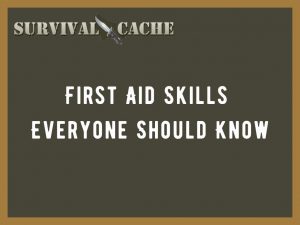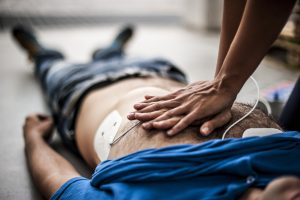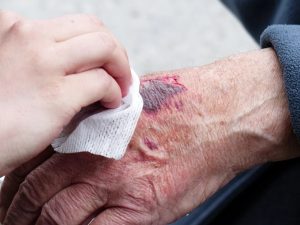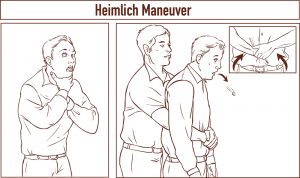First aid knowledge and skills are incredibly important for everyone to know. This becomes even more important when emergency services are not available or can not arrive promptly.

The following list is some basic first aid skills that I think everyone should know how to do. The list is not meant to be a detailed step by step guide but rather a composite of the skills that should be on your radar. I would like to preface the list by saying I am not a medical doctor and the following information is meant for educational purposes only.
SKIP AHEAD
First Aid Skills Everyone Should Know
Prevention!
If you dress properly you will lower your chances of having to deal with hypothermia.
If you take it slowly you will lower your chances of twisting an ankle or sustaining a fall injury.
If you observe safe knife handling techniques, you will lower your chances of dealing with cuts.
I understand that no matter what, accidents happen but overall, people need to slow down and keep their wits about them. As the old saying goes, “An ounce of prevention is worth a pound of cure.”
CPR

Almost everyone is familiar with this and has most likely taken a class on it in school or through their workplace. Being able to revive someone or being able to keep basic life functions going long enough until medical help can arrive, is a critical skill to know.
Control Bleeding
Certain wounds can cause an individual to bleed out within minutes. When seconds count, knowing how to apply pressure and control bleeding is truly a lifesaver.
Speaking of being able to control bleeding, knowing how to apply a proper tourniquet should be on everyone’s radar. A tourniquet is a tool used to stop blood flow to an injured limb. Do not rely on what you see on television shows for how to do this, generally, they are wrong. Conduct proper research from a credible source for how to properly apply a tourniquet.
Recognize Mental Health Issues
Not all wounds are broken bones or bleeding cuts. Learn how to recognize the signs of deteriorating mental health such as depression or anxiety issues. Poor mental health can lead to big problems down the road. Know some of the signs and how to properly deal with them.
Wound Care

Even the smallest cut can become infected causing serious issues if not taken care of. When it comes to wounds learn how to clean them and how to continue caring for them until they are fully healed.
Treating Hypothermia
Hypothermia can easily happen in emergency situations when you are caught off guard with improper clothing, an inability to start a fire, and no shelter to speak of. The body’s temperature only has to drop a few degrees for this to set in and once it does an individual will be in a bad situation. Learn how to prevent it and how to take care of it should this happen to you.
Treating Hyperthermia
Hyperthermia, also known as heatstroke, doesn’t get as much attention as its counterpart hypothermia. However, that doesn’t mean it is any less dangerous. Signs of hyperthermia include headaches, fatigue, dizziness, and muscle cramps. If any of these symptoms occur while operating in hot temperatures you need to get to a cool shady area and increase your fluid intake.
Making a Splint
Splints are used to help immobilize broken bones or joints and muscles that have been sprained. You may not be able to fully treat one of these injuries but immobilizing the affected area will help to prevent further damage and the individual will be more comfortable.
The Heimlich Maneuver

This is one of those first aid skills that is not brought up often as it pertains to survival situations. I wanted to put it on the list because when it happens there is not much time to act before someone can suffocate. There are two methods for this maneuver. The first is performing it on someone else and the second is performing it on yourself when no one else is around. Both methods should be learned.
Wrap Up
There so many different first aid skills that a list like this is just the tip of the iceberg. I am sure there will be readers that disagree with some of the items on this list and that is fine. Do not think of these nine skills as the only skills to know but rather a starting point for expanding your first aid knowledge.

